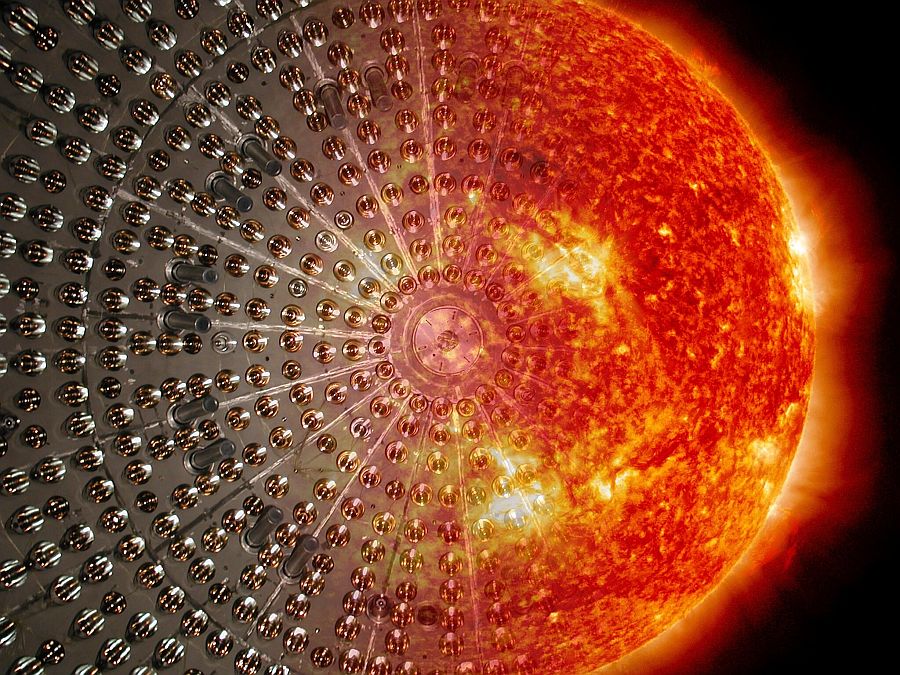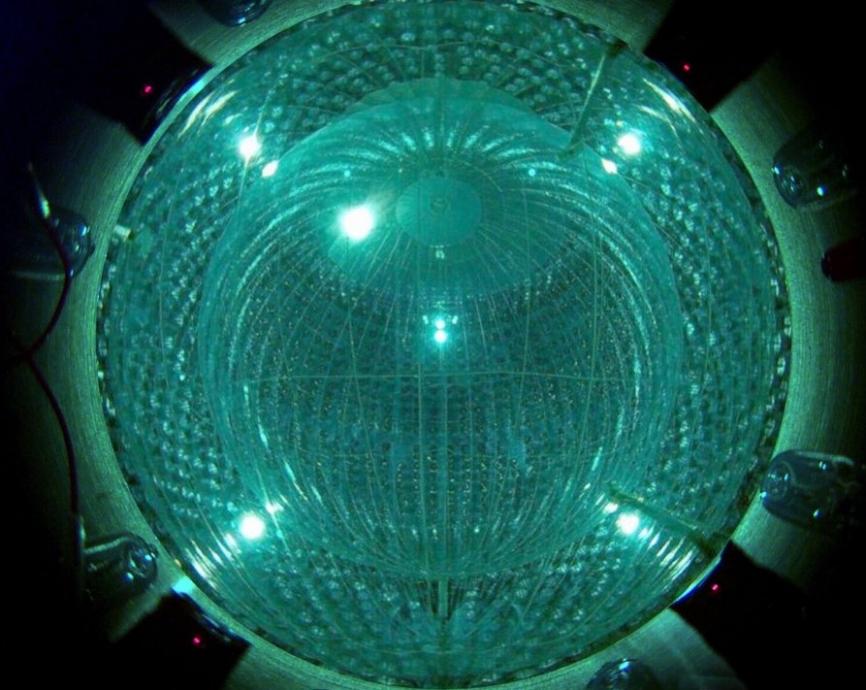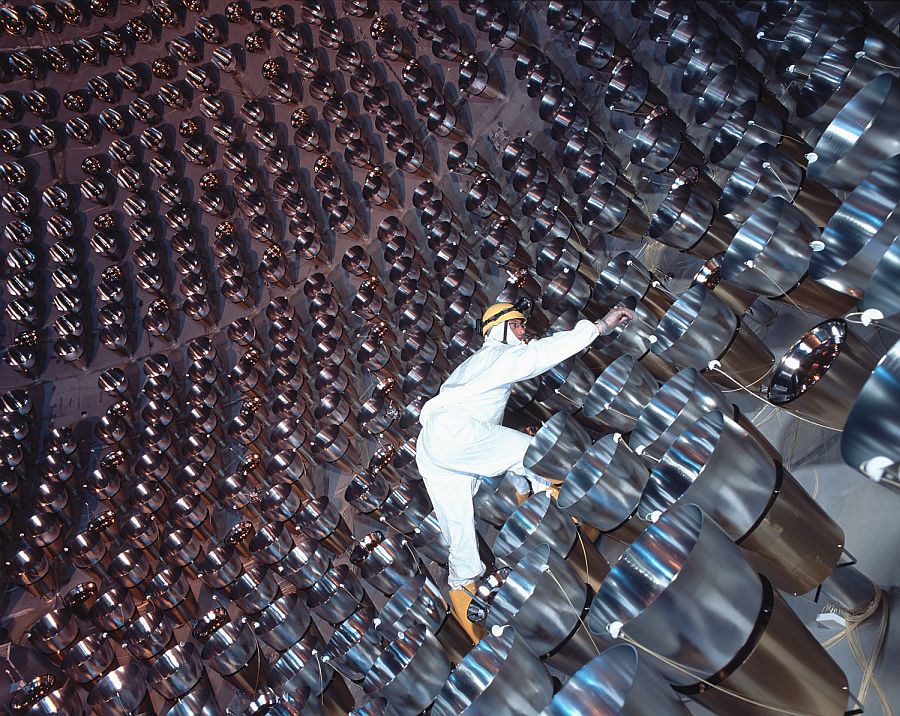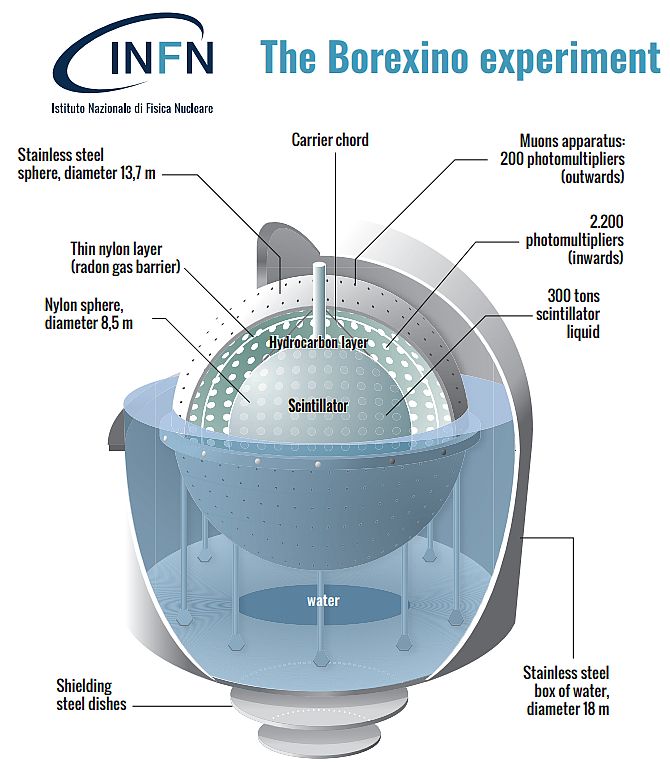
Credit: Phys.org
Until now, astronomers had classified nuclear fusion that is taking place within the core of the Sun is due to Proton Proton Cycle. However, an international scientific collaboration at the INFN Gran Sasso Laboratories, Italy were able to detect neutrinos in the Sun by the CNO cycle.
With this, for the first time, it has surfaced that carbon-nitrogen-oxygen (CNO) fusion-cycle is also at work in our Sun. An experimental result that was initiated during the 1930s.
Nuclear fusion reaction is common at the core of stars. In fact, it is the only source of energy in any star. When it comes to stellar bodies, the two common fusion reactions are:
- Proton Proton Cycle
- Carbon Nitrogen Oxygen (CNO) cycle
Proton Proton Cycle
It is a type of self-sustaining nuclear fusion reaction which is seen in smaller stars like Sun. Protons (subatomic particles with a positive charge) combine to form higher alpha particles along with the emission of enormous amount of energy.
Huge energy is released when small nuclei combines together. The combination gives rise to a bigger nucleus. The resultant larger nucleus leads to higher binding energy and stability.
Core of the sun is saturated with Hydrogen nuclei, which are just protons. So, two Hydrogen nuclei/protons come together to create Deuterium.
This process requires a lot of pressure and heat as it is not possible easily. Two particles of the same charge generally repel each other. However, both the variables – extreme heat and high pressure – are available at the core of the sun, hence, protons are able to overcome the repulsion to create Deuterium.
Deuterium also known as heavy hydrogen or an isotope of hydrogen.
In simple terms, two protons combine together to form one Deuterium nucleus, that has 1 proton and 1 neutron. This also gives rise to positive beta decay process.
Beta decay process occurs when proton gets converted to neutron or vice-versa.
Therefore, we can see an emission of
- anti-electron, that is, electron with a positive charge, positron.
- gamma radiation or the energy.
- neutrino, sub-atomic particle with no charge and no mass.
Deuterium further combines with another proton to create an alpha particle isotope. Like the previous reaction, energy is also released in the form of gamma radiation.
Similar two step reaction will take place to form an alpha particle isotope. Further, the two alpha particle isotopes combine to form alpha particle and release of two protons.
Therefore, the net reaction is:
6 protons (hydrogen nuclei) are absorbed while 2 protons are released.
Or we can also conclude,
4 protons (hydrogen nuclei) combine together to create an alpha particle. And also lead to the release of 2 Positrons, 2 Neutrinos and enormous amount of energy.
This is the dominant reaction that occurs at the core of the Sun and stars that have similar sizes and masses.

The CNO Cycle
The CNO Cycle is common is massive stars. Stars that are bigger than the sun.
Hydrogen combines together to create an alpha particle however, the three Carbon, Nitrogen and Oxygen act as a catalyst that helps in the cyclic process to take place.
Carbon-12 combine with proton will create Nitrogen-13 with an emission of gamma radiation or the energy. Resultant Nitrogen-13 is unstable so it will undergo beta decay process, and again we will see the following emissions:
- anti-electron, that is, positron
- neutrino and
- gamma radiation
Here, proton is converted to neutron hence, the result will be Carbon-13. This Carbon-13 is again combined with Hydrogen nuclei to create Nitrogen-14. This reaction is also accompanied with an emission of gamma photon.
Nitrogen-14 is again combined with another Hydrogen to create Oxygen-15. Also, with an emission of gamma radiation.
Oxygen-15 is unstable and it will undergo beta decay process with the following emissions:
- positron
- neutrino
- energy in the form of gamma radiation.
And end up getting Nitrogen-15, which again will combine with Hydrogen to form Carbon-12. The carbon isotope with which we started the CNO cycle.
Eventually, Nitrogen-15 creating Carbon-12 will also lead to an emission of alpha particle.
At every step photon is getting absorbed. While Carbon, Oxygen and Nitrogen is not getting transformed into something else, they act as a catalysts. Hydrogen combines together to create an alpha particle.
Therefore, the net reaction is:
4 protons (hydrogen nuclei) are combined together to create an alpha particle + 2 Positrons + 2 Neutrinos and enormous amount of energy.

Which stars use the CNO Cycle?
The CNO Cycle occurs at bigger starts only because Carbon has bigger nucleus and higher positive charge than Hydrogen.
This implies for CNO cycle to occur, it needs greater temperature and higher pressure than that is present in the Sun. Preferably, stars that are more than 1.3 times as massive as the Sun.
CNO neutrinos
Although in both the cycles, Neutrinos are a part of the net reactions, however, both differ by spectral signature. In the current research, astronomers have confirmed the presence of CNO cycle in the core of the sun. Even though the operational level is just 1%.
Neutrino is one of the most essential ingredients to understand universe. The only probe that will help to gain insight in the processes that go on in the sun.
In one second, nearly 420 billion of these “strange particles” pass through every square inch of the earth’s surface without interacting. One of the biggest enigmas yet to be solved by the physicists.

The Borexino detector
With the help of INFN’s Borexino detector, researchers were able to establish the existence of this additional energy generation mechanism.
Initially, the presence of CNO cycle was hypothesized in 1938 by Hans Bethe and Carl Friedrich von Weizsacker independently. As per their theory, heavy nuclei carbon, nitrogen and oxygen might act as a catalyst and initiate fusion of Hydrogen nuclei. Thus, creating a cyclical chain of nuclear reactions preceding the sequence of the proton-proton series.
However, no direct evidence was obtained. Thus, their hypothesized stellar energy generation mechanism couldn’t cross the boundaries of theoretical realm, until November 2020.
Takeaway
The lab had planned Borexino to close operations by the end of 2020. But just at the last round of its relay race, Borexino detector was able to fetch the most ground breaking discovery of CNO Neutrinos.
This discovery is quite a feat. In the future it’ll continue to remain as one of the most successful and interesting experimental effort for astrophysics and astroparticle physics.



